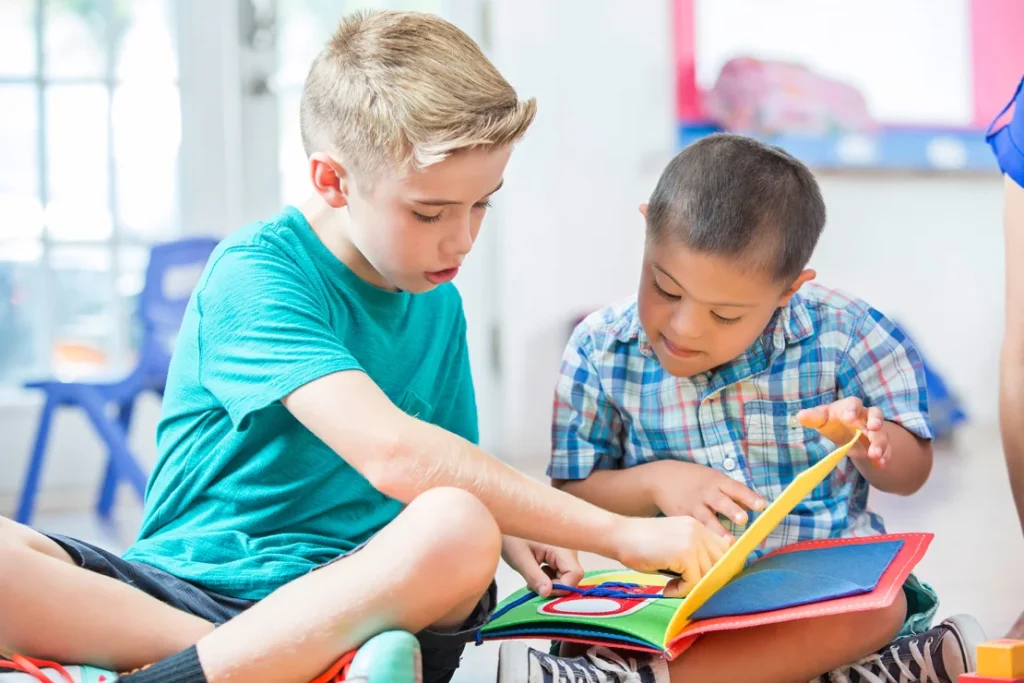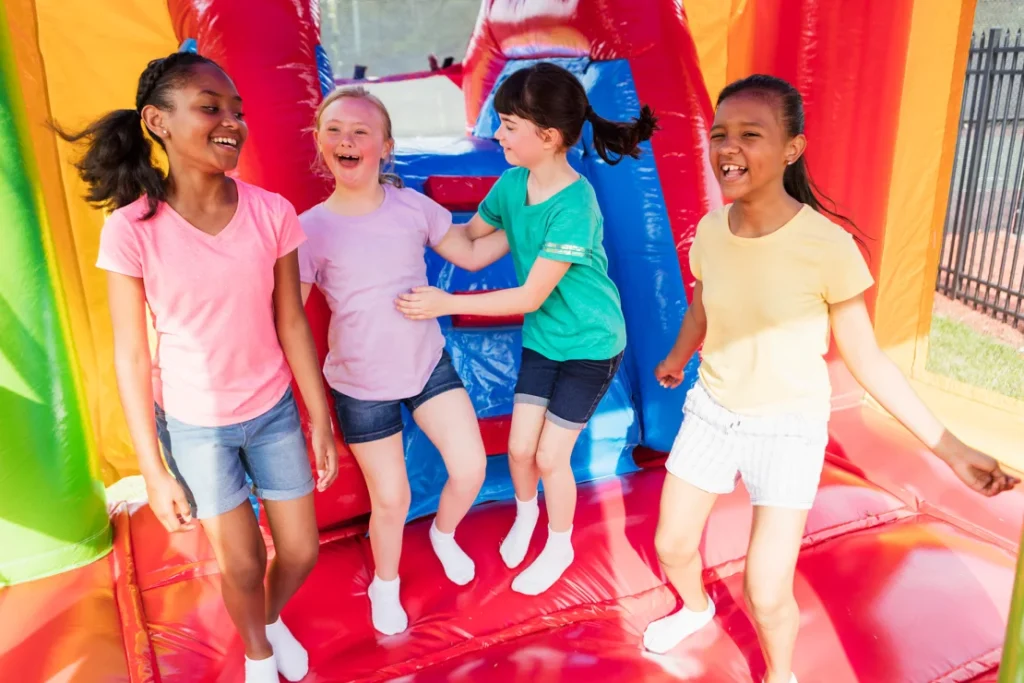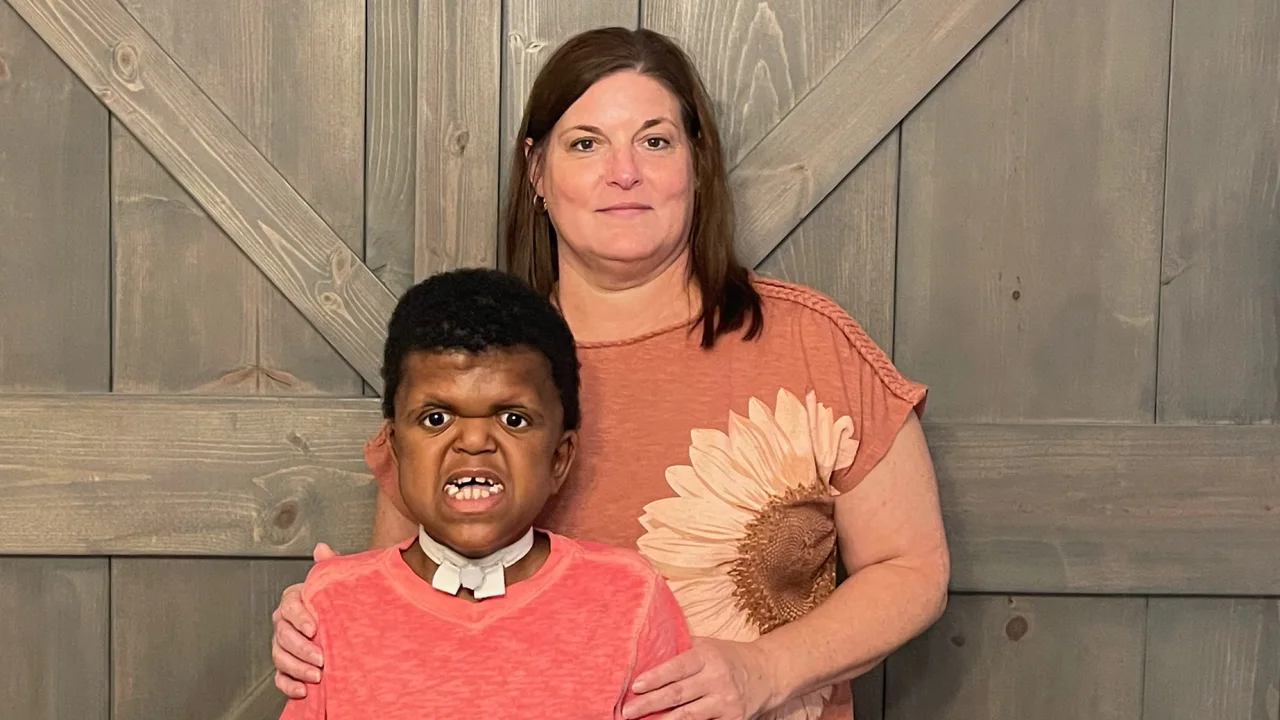Making friends at the start of a new school year can be scary for kids such as Trae Bruns, a fifth grader in Troy, Illinois.
Trae has a genetic disorder and physical differences, and he doesn’t always approach other kids, his mother, Jackie Bruns, told me. “He usually waits for them to approach him,” she said. “It can be hard for kids with a disability to approach other kids. They don’t know if they will be rejected or made fun of for their disability.”
Fifteen percent of public school students in the United States have a disability diagnosis, which includes both physical disabilities as well as less obvious learning or social disabilities, according to a Pew Research Center analysis of US Census Bureau data. And 95% of kids with disabilities are taught in mainstream classrooms, which means that most children are going to be engaging with all different types of peers on a regular basis.
Here are a few ways parents can encourage their children to assimilate and befriend someone who seems different.
Teach about not making assumptions
To make school easier for her son, Bruns sends a letter at the start of each school year to parents in her son’s class explaining that he looks different but wants to be treated like anyone else. “I explain that he loves to read, run, play and, most of all, make new friends.”
Dr. Caroline Mendel, a clinical psychologist at the Child Mind Institute in New York City, agrees with this approach and explains that parents can follow up at home, even before the kids meet. It’s an opportunity to say something such as, “I learned that Trae likes Legos. This sounds like something you might want to do together.”

“Parents can teach kids that the most important thing is that we can’t make assumptions based on how someone looks or acts,” Mendel said. “We need to get to know that individual. The disability may be a part of their identity, but it’s not the only thing that defines them. For example, do we both like Pokémon or enjoy soccer?”
That strategy has helped Trae make friends. “If the other person can just start playing or talking to the person with the disability, it makes that person feel more at ease,” Bruns said. “I have witnessed this happen on multiple occasions.”
Teach about polite curiosity
Kids may still have questions when they meet a new friend. But they always need to respect others and use kind words. Rather than saying, “What’s wrong with you?” they can ask, “Do you mind if I ask about your (prosthetic) leg or wheelchair?” Mendel said.
“It’s OK to be curious, but do so respectfully and avoid touching equipment or devices without permission,” Mendel said. “Explain to kids that politely asking a question is OK, but not everyone is going to want to talk about it.”
If they do want to share, listen and let them take the lead. Kids may share interesting and fun facts about their disability, said Michelle Hu, who grew up wearing hearing aids and now works as a pediatric audiologist.

“Disabilities can be cool, and having different friends is fun and interesting,” Hu said. “For example, hearing aids and cochlear implants can be connected to a music source like headphones. Remote systems can allow kids to accidentally eavesdrop on teachers’ conversations.”
“Disabilities should be normalized. It’s a part of life,” Hu said. “The deaf and hard of hearing community is closely knit, but deafness has a range. Deaf cultures and communities typically use American Sign Language as their primary language. Take an interest, learn some signs — it can be beautiful.”
Aside from getting comfortable with physical differences, kids with disabilities may move differently or respond differently than their peers. If someone who wears hearing aids doesn’t acknowledge your child right away, it’s OK to get that person’s attention and try again, Hu said.
“A lot of times, I felt left out of a conversation, especially in noisy places like the cafeteria,” Hu said. Go ahead and politely ask, “Can you hear me OK?” There’s no reason to shout, but visual cues and repeating something a different way can help kids who use hearing devices be part of the group, Hu said.
Explain about different social skills
While some disabilities are visible, others are not. And explaining that some people may have different social cues or ways of engaging can help them connect with students.
Ten-year-old Gawain Hootman of the East Bay in California is autistic. He wants to be included but isn’t always up for socializing, his mother, Ramsey Hootman, told me. “If I could tell other kids his age to do one thing, it would be to keep inviting him to join them,” she said. “He doesn’t always like to participate, but he always wants to be invited and welcomed. Please don’t treat a ‘no’ today as a no forever.”
Some kids may need time to process the invitation so giving them another chance to join in creates a more welcoming environment for everyone. It also alleviates social pressure to always be consistent.
“While it may feel more natural to approach someone who seems similar, we can learn something from friends who are different,” Mendel said. “A child with autism may have trouble making eye contact or taking turns in a conversation. It doesn’t mean they don’t want to be your friend.”
The bottom line is that everyone is different, but everyone wants to be included.
“Teach your kids to look around the room or playground for kids who are not engaged and invite them to join,” Hootman said.
SOURCE:CNN

